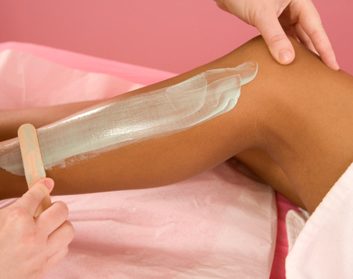Are there risks to waxing?
Worried that your trip to the salon might not be safe? Here’s what you need to know about waxing

Source: Best Health magazine, Summer 2013; Image: Thinkstock
Waxing is not completely without risk. In 2007, an Australian woman nearly died from an infection contracted during a Brazilian. And in 2009, the state of New Jersey briefly considered banning Brazilian waxing after two women landed in hospital with infections.
However, Dr. Michael Libman, director of the division for infectious diseases at McGill University, says you are highly unlikely to end up in hospital from waxing. More common risks include dermatitis, skin irritation and folliculitis (an inflammation of the hair follicle), particularly in the pubic area, ‘where it tends to be warm and humid,’ says Libman.
Stay safe after waxing
Post-treatment, stick to warm (as opposed to hot) baths and showers, and avoid tanning, swimming pools, Jacuzzis, steam rooms and other public facilities. ‘Your pores are open,’ explains Regina day-spa owner Pat Cassell-Ogilvie, ‘so freshly waxed skin anywhere on the body is more prone to bacteria and infection.’
Although provinces and territories inspect salons and spas for sanitation, they rarely visit more than once a year, so there’s an element of ‘buyer beware,’ according to Vancouver-based Prabjit Barn of the National Collaborating Centre for Environmental Health, who adds that you can minimize your risk by avoiding waxing if you have broken, irritated or infected skin.
Questions to ask for safer waxing
‘ Do technicians wash or sanitize their hands before treatment, and wear disposable latex gloves?
‘ Is the paper or linen on the table changed after each client?
‘ Have you noticed double-dipping? ‘Once a disposable stick has touched the client’s skin, it should never be dipped in the wax again,’ says Barn. Even better, technicians can use individual wax pots and discard the remains.
‘ Are there pump bottles for lotions, to eliminate the risk of cross-contamination?
‘ Are tweezers and other instruments disinfected after each client?
‘ Does the spa look clean? ‘If the coffee cups are stored right beside the wax pot, it’s not a good sign,’ says Barn.
When to avoid waxing
Many spas and wax bars will have you fill out a health questionnaire, but you’re wise to proceed with a little foreknowledge, says Cassell-Ogilvie. Avoid products with alpha-hydroxyl or glycolic acid 48 hours prior to facial waxing. And avoid facial waxing altogether if using topical prescriptions such as Retin A, Renova or Differin. Other drugs, such as antihistamines, tetracycline, cortisone, and blood-thinning and thyroid meds can increase sensitivity during waxing or lead to excess bleeding. Says Cassell-Ogilvie: ‘We won’t wax if you’ve taken [acne drug] Accutane within a year.’
This article was originally titled "Footloose and fuzz-free" in the Summer 2013 issue of Best Health. Subscribe today to get the full Best Health experience’and never miss an issue!




